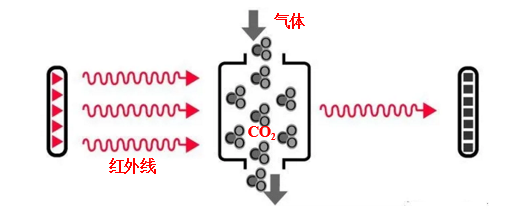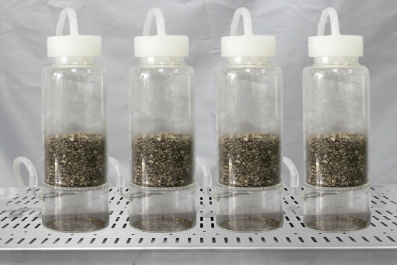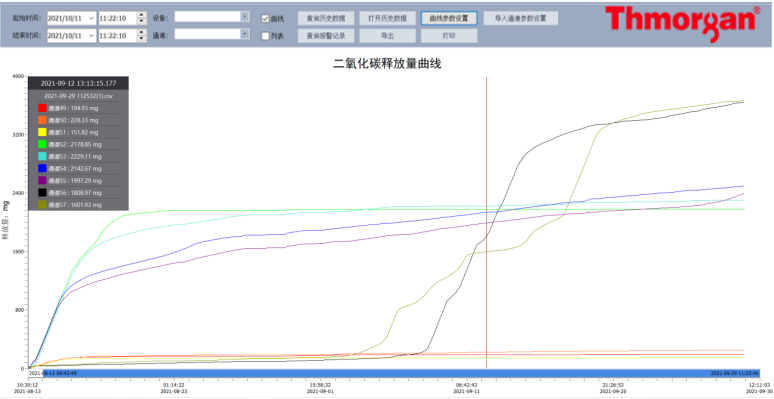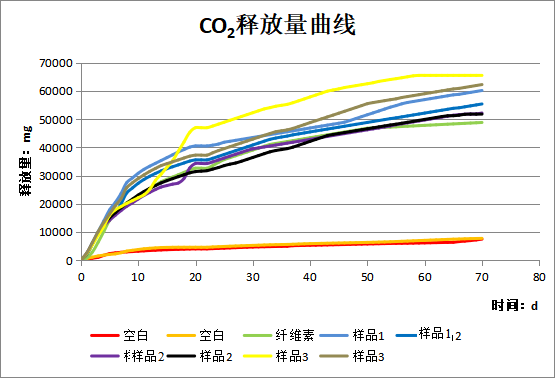Product
All categories

Compost infrared biodegrader
Model :M9000
Product use
1. Meet the test requirements of GB/T19277.1-2011 standard;
2. Meet the test requirements of ISO14855.1 standard;
3. It can be used to study the biodegradability of bio-based materials and products;
4. It can be used to detect the biodegradability of composting method;
5. It can be used in other standard experiments to determine the amount of carbon dioxide released under the condition of simulated aerobic composting.
Product features
1. Fully meet the test requirements of GB/T 19277.1 standard;
2. Adopt the design method of solid culture and open oxygen supply to simulate the environment with strong oxygen demand;
3. High detection accuracy, 9-channel independent infrared detection, real-time online measurement of carbon dioxide emission;
4. Carbon dioxide concentration and cumulative amount are displayed, which can be derived in the form of charts or curves;
5. The detection range is wide, and the maximum detection limit can reach 10000ppm;
6. Silent design, 9-way independent controllable air supply, sound less than 45db;
7. Water bath temperature control, temperature adjustment accuracy ± 0.1 ℃;
8. Automatic level control, with automatic water make-up design;
9. Cloud platform detection allows real-time online observation of data and curves.
Product principle
This experiment system simulates the process of biodegradation of bio-based materials under aerobic composting conditions. In the aerobic environment, microorganisms consume oxygen and produce carbon dioxide, water and other inorganic substances with bio-based materials as the carbon source. The generated carbon dioxide is monitored in real time by high-precision infrared sensors, and the real-time concentration of detected carbon dioxide is integrated with the flow rate and time to calculate the carbon dioxide release from the biodegradation of the sample. The biodegradation rate is the percentage of the carbon dioxide released by the sample biodegradation and its theoretical carbon dioxide release.

Technical parameters
1. Working conditions:
1.1 Power supply voltage: AC 220V±10% 50Hz single-phase;
1.2 Working temperature: 15 ~ 30℃;
1.3 Relative humidity: ≤ 80%;
1.4 Durability of instrument operation: it can work continuously for a long time.
1.5 Machine power: 4KW;
1.6 Dimensions (L×W×H) : 1500mm×900mm×900mm
1.7 Gross weight: 180KG.
2. Oxygen supply system
2.1 Air supply mode: continuous aeration oxygen supply, built-in air supply pump;
2.2 Air pump control: the air pump is divided into 9 channels, each channel has an independent switch;
2.3 Electronic flowmeter adjustment range: 0.01-500ml /min;
2.4 Gas flow adjustment range: 50 -- 300ml/min;
2.5 With 9 mechanical flowmeters to adjust the flow rate;
2.6 With 9 electronic flowmeters to collect flow rate;
3. Temperature control system:
3.1 Temperature control mode: air bath;
3.2 Set temperature range: room temperature -90 ℃, step by 0.1℃;
3.3 Temperature control accuracy :≤±0.1℃;
3.4 Temperature control box top sliding door, easy to operate;
4. Reactor system
4.1 Number of channels: ≥9;
4.2 Reactor volume :≥2000ml;
4.3 Reactor design: double-layer design;
4.4 Adding water: manually adding water;
4.5 Mixing method: manual mixing;
4.6 Material of reaction bottle: high borosilicate hard glass;
4.7 Gas supply mode: bottom gas supply;

5. Test the system
5.1 Detection method: infrared carbon dioxide detection;
5.2 Number of infrared probes: ≥9;
5.3 Display mode: synchronous dual display of carbon dioxide concentration and total amount;
5.4 Detection range: 0-10000ppm;
5.5 Resolution: 1ppm;
5.6 Data collection cycle: up to 1 second once, seconds, minutes, hours can be freely selected.
6. Software system
6.1 Software control system with independent intellectual property rights;
6.2 Software can collect data and generate real-time data curve;
6.3 Bearer system: professional operating system such as win7/8/10;
6.4 Data storage: It can be stored in real time in the experiment;
6.5 With a cloud platform, data can be accessed remotely;

Instrument configuration requirements
|
Serial number |
name |
quantity |
unit |
remark |
|
1 |
host |
1 |
Taiwan |
|
|
2 |
Reaction flask |
9 |
entries |
|
|
3 |
Decarburization bottle |
9 |
entries |
|
|
4 |
Condensing bottle |
9 |
entries |
|
|
5 |
Dehumidifier bottle |
9 |
entries |
|
|
6 |
Connecting hose |
1 |
Set of |
|
|
7 |
software |
1 |
Set of |
|
|
8 |
Rando |
1 |
Set of |
|
Examples of experiments
This is the experimental result of testing the biodegradability of a sample by using the M9000 compost infrared biodegrader and referring to the method standard GB/T19277.1-2011. The test period was 70 days. As can be seen from Figure 1, the degradation rate of cellulose reached 81.88% within 45 days. Within 70 days, the degradation rate of cellulose reached 98.18%. At this time, the growth of each experimental group basically ended, and the curve was smooth. The experimental design was shown in the following table:
Table 1 Experimental design
| 1 | 2 | 3 | 4 | 5 | 6 | 7 | 8 | 9 | |
|
Inoculation |
300g | 300g | 300g | 300g | 300g | 300g | 300g | 300g | 300g |
|
Cellulose |
30g | ||||||||
|
Sample 1 |
30g | 30g | |||||||
|
Sample 2 |
30g | 30g | |||||||
|
Sample 3 |
30g | 30g |
 |
|
Figure 1 CO2 emission curve |




